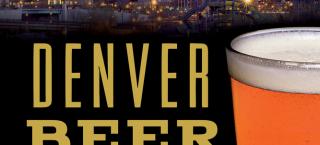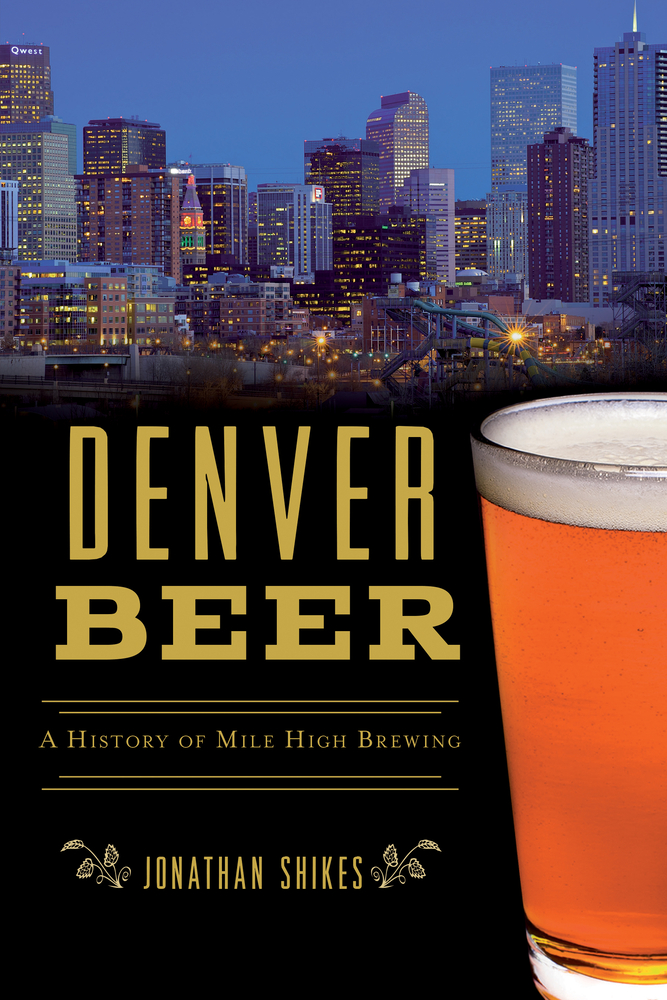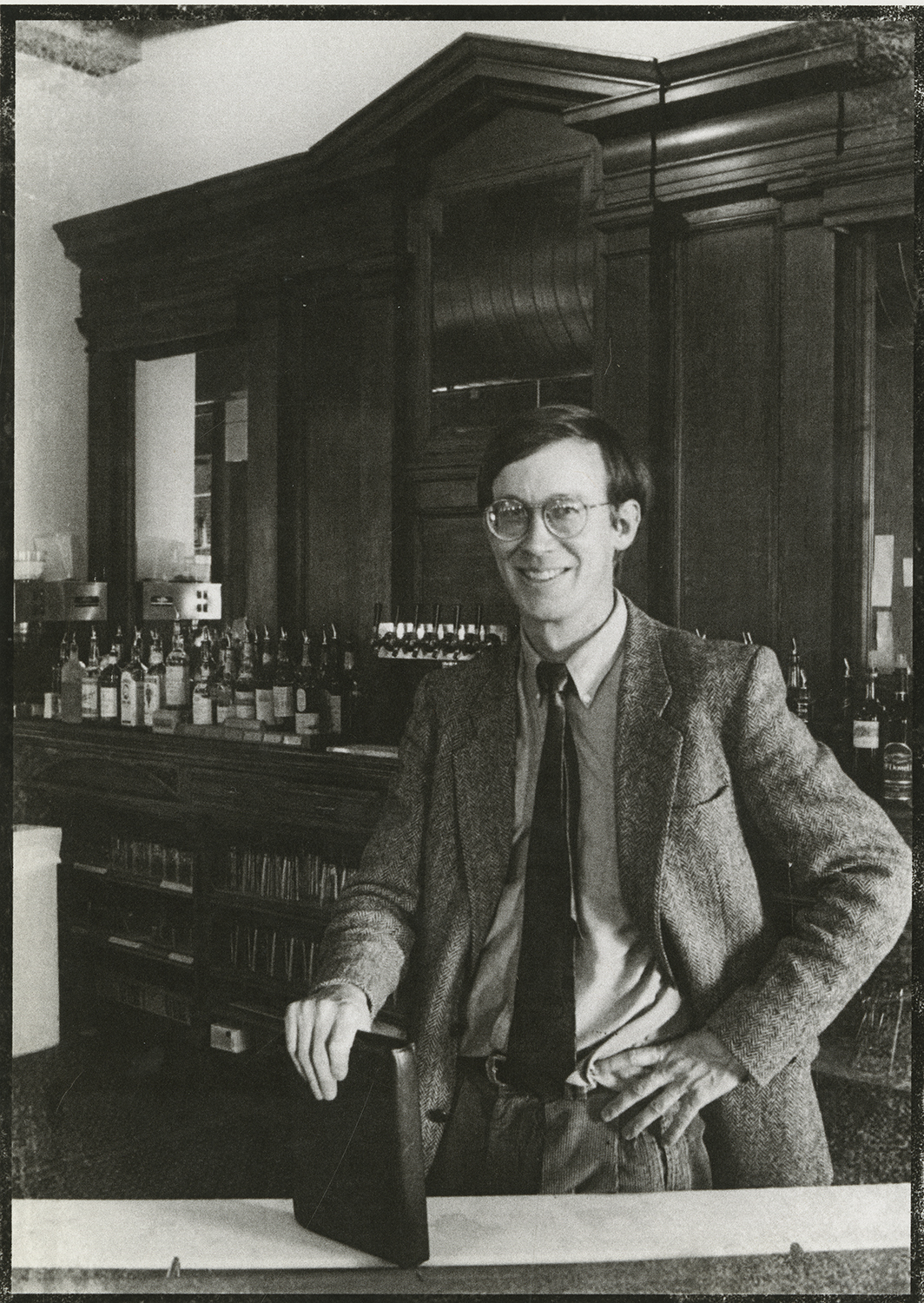
Story
A Shot and a Beer
Drinking Beer in Denver as We Emerge from the Covid-19 Pandemic
Denver Beer by Jonathan Shikes offers a sessionable look at the Mile High City’s beer culture past and present.
This is an interesting moment to review a history of Denver beer. The city’s brewers, like all of us, are navigating the social and economic fallout from coronavirus, potentially writing a new chapter for an industry that has come to be closely associated with the city’s culture and identity. Much like last year’s Beer Here! exhibition at the History Colorado Center, Jonathan Shikes’s Denver Beer: A History of Mile High Brewing (published by American Palate in 2020) may be inadvertently well-timed to mark the high point of the industry before a moment of transition.
If that proves to be the case, Shikes—a longtime writer on Colorado’s beer beat and one of the industry’s most insightful observers—has given us an enjoyable and informative record of a period in which the brewing industry reflected many of the economic and social forces that transformed Denver over the past forty years. The result is a well-told local history that provides a new lens through which to view Denver’s development and adds to the broader history of beer in America through the current craft boom, a topic that has recently drawn increasing scholarly interest and even merited its own curator at the Smithsonian. Denver Beer is also an engaging read, easily enjoyed with a pint from your favorite Denver brewery.
Shikes organizes the book in a loosely chronological series of discreet but interlocking profiles of different breweries and key figures in the local brewing industry. He covers the history of Colorado brewing up to the 1970s—nearly the first 120 years—in the first fifty-two pages of Denver Beer. The book finds its stride, and its craft beer heart, when he turns his attention to Charlie Papazian and John Hickenlooper, giving readers a well-rounded and insightful portrait of both men. From there, informative short profiles of the breweries Denverites love, like Great Divide, Wynkoop, or Strange Craft Beer Company, are mixed with brief biographies of the people who handbuilt Colorado’s craft beer scene. In aggregate, the individual portraits add up to a panorama of the city’s brewing scene at the center of the state’s brewing scene.
Shikes’s command of the recent history of the industry makes him an unbeatable guide for helping beer drinkers understand how the industry has grown and changed since the 1980s. Many readers will surely find themselves saying “So that’s what happened!” as they read the backstory to events that they witnessed beer-in-hand but did not know the reason for. The chapters are short and sessionable, and there’s an accessible and engaging tone to Shikes’s writing that kept me saying “sure, I’ll have one more.” Shikes also brings his profiles up to the present in the first part of 2020, making this a book worth reading now.
Shikes keeps his focus on the beer, only alluding to some of the more substantive historical narratives that brewing history can invite us to consider. For example, the single chapter devoted to Coors, the state’s longest-running brewer, notably elides the boycott that embattled the company from the 1960s into ’80s with just a few sentences. Likewise, he largely sidesteps questions about craft brewing’s role in (or reflection of) the gentrification of Denver neighborhoods, alluding to it only glancingly in his discussion of the River North “RiNo” neighborhood. Perhaps these elisions will make for a more approachable reading experience for a broad audience, but it is likely to leave beer history aficionados wanting more complexity.
However, wanting more does not mean a lack of appreciation for what is on tap. There’s a lot to appreciate about Denver Beer. And Shikes does serve up some big, complex topics in the book’s penultimate chapter, entitled “Denver Beer Culture Today,” in which he tackles two of the biggest questions hanging over this book and the Denver (and Colorado) beer industry: Why has Colorado become an internationally renowned hub of innovative craft brewing? And what should we make of the lack of diversity within the industry?
Questions like these are good to ponder over a pint. Denver Beer gives readers the opportunity to do just that. Many will find value in this book, including the men and women of Denver’s (and Colorado’s) brewing scene, commodity historians, aficionados who find inspiration in the city’s beer culture, and anyone looking to gain a new perspective on Denver’s transformation over the past forty years. As the pandemic delineates what may be a new chapter for Denver’s brewers, this chronicle will serve as a reminder of how we got to now and how the industry built a firm foundation from which to meet the challenges ahead.
This review was originally prepared for the Colorado Book Review, a publication of the Center for Colorado Studies at the Denver Public Library, and is printed here with permission.
More from The Colorado Magazine
The First Draft: Colorado History Over a Few Beers Shine a light just right on a pint of local beer and it will reveal Colorado’s history.
Imagining a Great City Mayor Federico Peña’s campaign vision to “Imagine a Great City'' catalyzed the development of Denver and its region from the 1980s onward.
The Lingering Aftertaste of 2020 Before 2020, people just waltzed right into bars, restaurants, and cultural venues to be among other people. But, well, that was before 2020. For the Hindsight 20/20 project, Ed Sealover considers what going out for a beer might look like in a world forever changed by pandemic.



